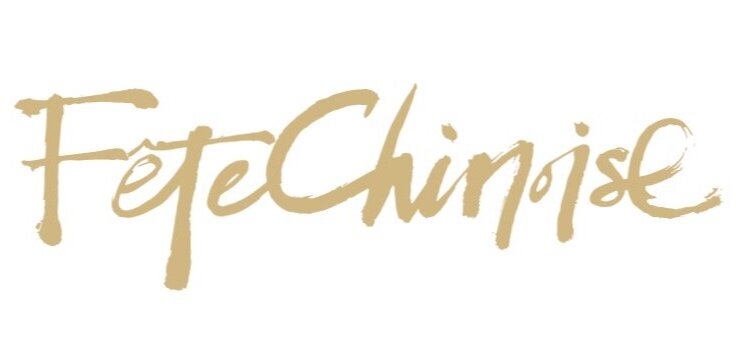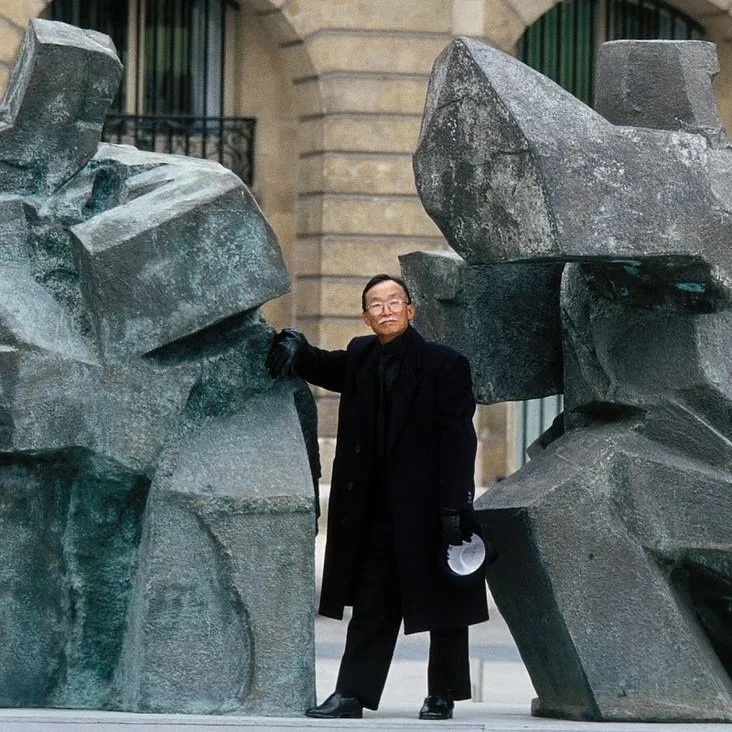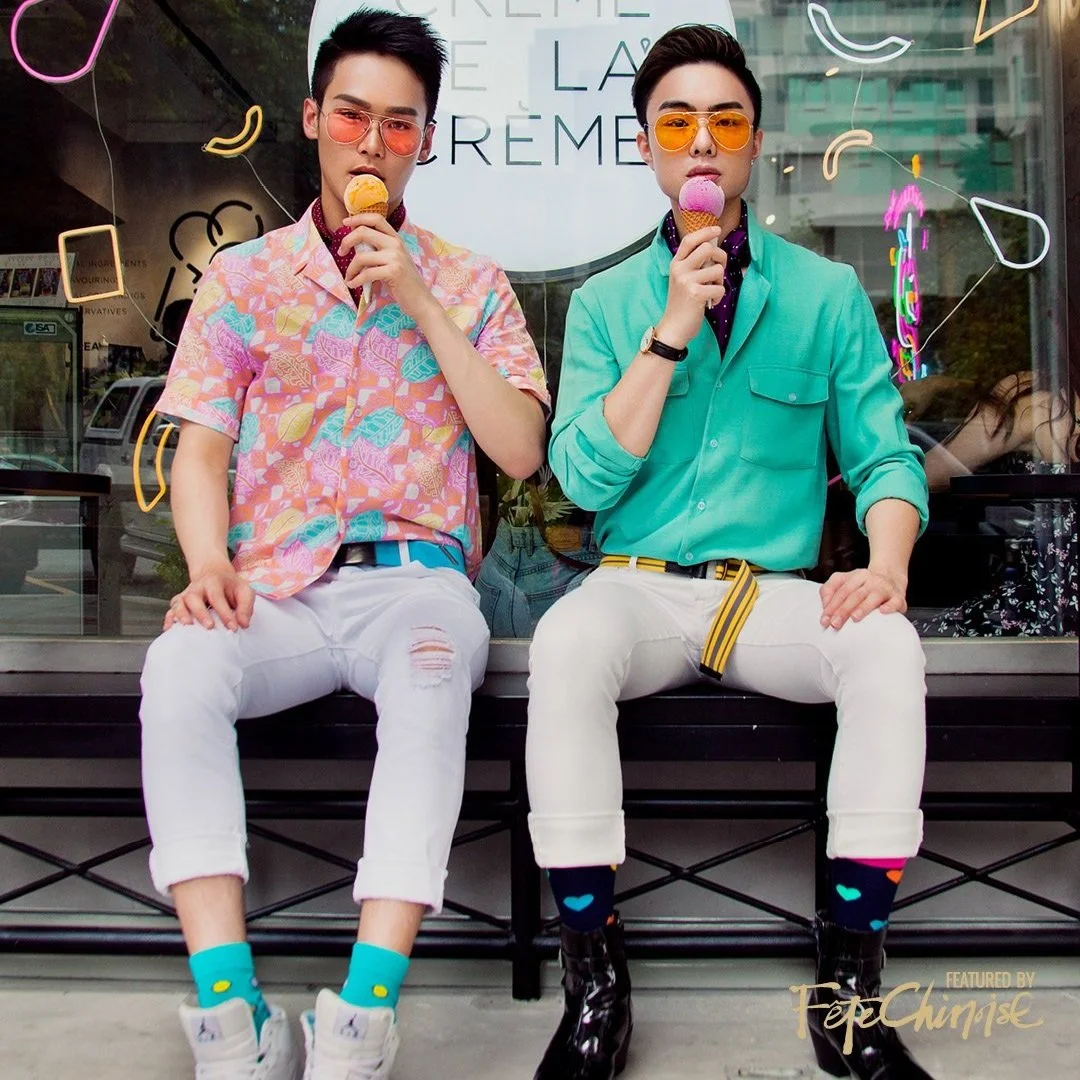【Tradition Explained】The Story of Purple in China【傳統解碼】孔子厭惡的「紫色」寓意高貴?
Written by Christina Han,
Assistant Professor of Asian History, Wilfrid Laurier University, Brantford
Translated by Elaine Sun • Edited by Fête Chinoise Team
“majesty of the dragon”
floral by fiori floral | photography by james paul correia
Yet, despite red’s dominating presence in contemporary Chinese culture, I believe it is important to remember that the ancient Chinese people also appreciated colours other than red: colours such as purple.
在眾多顏色中哪一種最能夠代表中國文化呢?讀者可能會說,答案太明顯了,當然是紅色!畢竟,我們怎麼能夠想像沒有「紅色」的中國節慶呢?無論是春節、元宵節、中秋節、婚禮、或壽辰,數千年以來,紅色一直是在中國人心中最受歡迎及具代表性的顏色,紅色代表著生命力、青春、家庭、團結、幸福和幸運。
中國人對紅色的迷戀眾所周知。還記得幾年前,社區中一群西人長輩為我丈夫做了一幅棉被以道謝他為社區的貢獻,這群姨姨向我丈夫展示她們美麗的手工時說:「我們特別為你做了一幅紅色的棉被,因為紅色是中國族裔的顏色。」儘管紅色在當代中國文化中佔有了重要的地位,其實,由古至今,中國人也十分欣賞紅色以外的顏色,紫色也同樣根深蒂固。
“The story of purple reminds us of the rich diversity within Chinese culture.”
“dinner party at winter solstice” @ fête chinoise showcase
design by melissa haggerty @ spectacular spectacular + lidia tacconelli @ fiori floral
photography by george pimentel
Purple? 紫色的神奇故事?
Purple might appear as an odd choice in the Chinese colour spectrum as it does not belong to the Five Colours (red, white, blue/green, yellow, and black). These colours together with the Five Elements (fire, metal, wood, earth, water) and the Five Directions (south, west, east, centre, north), constituted a vision of an ideal world order in ancient China.
Unlike the Five Colours, in its early days the colour purple was poorly received, especially from Confucian scholars. As an intermediate colour between red and blue, purple earned the disapproval of early Confucians who believed the distinction between basic colours must be maintained as a way to promote proper social order. Confucius himself said in his Analects that he detested purple’s taking away from vermillion, and later Mencius echoed a similar view. The 3rd-century dictionary Shiming (Explanation of Names) defines purple as “a defect, an incorrect colour. A defect in the Five Colours that confuses people.”
However, despite these open condemnations, purple did not disappear from China. In fact, as we will see, the evolution of purple in China reveals the other story of colour. A story, that was hidden, even magical, unlike the clear and loud stories of the Five Colours.
Sponsored by piaget.
紫色在中國的色譜中似乎是一個奇異的選擇,它既不屬於五行(金、木、水、火、土)和五方(東、西、中、南、北),也不是古代中國世界觀的五色(青、赤、黄、白、黑)中的一員。
紫色有別於象徵特別意義的五色,作為紅色和藍色之間的混合色,最初,一直甚至被儒家學者冷視,學者們認為五色之間的差距能夠保持社會階層的秩序,孔子自身在《論語》中曾經提到,他厭惡相對於朱紅色而言不純正的紫色,後來孟子也對此抱以了相似的看法。三世紀的字典《釋名》(名稱解釋)更將紫色定義為「缺陷」、「不正確的顏色」和「具有瑕疵的顏色」。儘管存在著這些公開的譴責,紫色並沒有在中國文化裡消失。
事實上,正如我們所將看到的,紫色盡管不像五色那般清晰和響亮,在中國的演變揭示了顏色的另一個故事 — 一個被神秘、甚至神奇的故事。
A Scientific Feat: Chinese Purple 科學壯舉:中國紫
The earliest references to colour found in the Oracle Bones from the late Shang period (ca. 1600-1046 BCE) are white, black, yellow, and red. The Chinese term for purple did not emerge until the Southern and Northern Dynasties period (386-589 CE) (Wu, 2011). Thus, the production and use of purple pigment predates the invention of the colour term, "purple."
image: Xinhua News Agency
Purple pigment was a highly prized commodity in the ancient world because of the technological challenges involved in attaining it. Unlike other colour pigments which could be extracted from natural minerals, purple pigment had to be synthesized by human hands. Purple in the ancient world represented the technological sophistication and advanced knowledge of alchemy. Only China, Egypt, and Maya successfully concocted synthetic blue and purple pigments of ancient civilizations.
Chinese Purple or Han Purple (barium copper silicate (BaCuSi2O6) was discovered in 1992 by scientists FitzHugh and Zycherman when they were studying the purple coat of paint on the Qin terracotta warriors (FitzHugh and Zycherman, 1992). Scientists now claim that Chinese Purple was invented as early as 800 BCE and was applied to decorate objects around 220 BCE when the First Emperor’s mausoleum and his terracotta warriors were constructed. The discovery of Chinese Purple came as a big surprise to the scientific community as no other pigment like that was found in other parts of the ancient world at the time. The fact that the synthesizing of barium copper silicate involved a highly complex process raised even more questions: How did the ancient Chinese learn to create a purple pigment from synthetic chemicals?
Berke and Wiedemann (2000) have suggested a possible exchange of technology between Egypt and China as there was a compositional similarity between Egyptian and Chinese blue. Liu (2007) has argued that the pigment was invented by Daoist alchemists who experimented with barium compounds to create imitation jade out of glass.
However, the origin of the precious purple pigment in China still remains a mystery. The same pigment was used to add a purple hue to the Han dynasty ceramics. And as mysteriously as it came, Chinese Purple disappeared from China after the third century CE.
Image : china online museum
據史書記載,於晚期商代(公元前1600–1046年),甲骨文中最早記錄的顏色是白色、黑色、黃色和紅色。直到南北朝時期(公元前386年至589年)(Wu, 2011) ,才第一次出現了對紫色的定義與稱呼。但其實在顏色術語出現之前,紫色顏料的生產和使用早已存在。
因為生產技術上的挑戰,紫色顏料在古代世界中是一種非常珍貴的商品,當時,一般使用的顏料可以從天然礦物中提取,但紫色則必須由人工合成,合煉紫色不能草率,要靠技師精湛的技術和對煉金術的深刻理解。四大文明古國中,唯中國、埃及、和瑪雅成功製作合成藍色與紫色顏料。
1992年,科學家 FitzHugh 和 Zycherman 在研究秦代兵馬俑(FitzHugh and Zycherman, 1992)的紫色外套時,發現了中國紫或漢紫色顏料(矽酸銅鋇 BaCuSi2O6)。科學家現在聲稱中國紫早在公元前800年被發明,當第一位皇帝於公元前220年左右修建他的陵墓和兵馬俑時,紫色便被應用於裝飾。中國紫的發現對科學界來說是一個大驚喜,因為在古時期的其它區域沒有發現相似的顏料。事實上,合成鋇合金矽酸鹽涉及了極其複雜的過程,也引起了更多疑問:古代中國人是如何學習化學合成,從而製造紫色顏料的呢?
作為答案,Berke 和 Wiedemann(2000)指出了埃及藍和中國藍組成原理的相似性,從而提出了兩國之間可能存在著技術交流。Liu(2007)認為,顏料是在道教煉金術士嘗試用玻璃的鋇化合物製成仿製玉石的過程中發明的。
然而,除了這些科學猜測之外,中國珍貴的紫色顏料的起源仍然是一個謎。同樣的顏料曾為漢代陶瓷添加上過紫色的色調。此後神秘的,中國紫在公元三世紀後從中國消失了一段長的時間。
Purple and Daoist Spirituality 道家的紫氣東來
painting :《purple air comes from the east 紫氣東來》
image : 《月讀》
But purple did not fade away from Chinese culture completely and surfaced again in a religious context. Daoist biographies record that when philosopher Laozi decided to travel west in pursuit of a life as a recluse, a stream of purple air rose from the east and wafted toward the west. Yin Xi, the guardian of Hangu Pass, interpreted this unusual sight as an omen to an extraordinary event. When Laozi reached the pass, Yin requested the philosopher write down his teachings before leaving the gate. The result was his five-thousand-word classic, the Daodejing, which became the basis of Daoist philosophy and religion.
Since then, purple air became an auspicious symbol. The phrase “purple air comes from the east 紫氣東來” was circulated among the empire’s subjects during the Spring Festival to usher in a year of good fortune. The Daoist deity, Purple Tenuity God (God of North Star), provided another Daoist connection to the colour purple.
The Chinese believed that the deity who controlled the North Star (the star at the centre of the universe) had a purple complexion, hence the name. Purple Tenuity God, second son of Queen Mother of the West and the twin brother of the Great Emperor of Heaven, was one of the four chief Daoist deities. His palace, the Purple Tenuity Palace, was first mentioned in the History of the Han Dynasty (Stephen and Eichman, 2000) and was described as a magical place filled with purple pneuma. Later, the names of many Daoist temples included reference to purple, including the famous Purple Cloud Temple at the Wudang Mountains built in the 12th century. Since then, visualizing and inhaling purple pneuma became an important part of Daoist meditation for acquiring spiritual potency and immortality.
紫色並未完全從中國文化中消失,而後再次在宗教的背景下出現。道家傳記記載,當哲學家老子決定隱居並征程西方時,一縷紫色的空氣從東方升起,然後飄向西方。函谷關令尹喜將這不尋常的景象解讀為非凡事件。當老子到達關口時,尹喜請求這位大師在離關前寫下他的訓導。這一舉動造就的是他那五千字的經典,《道德經》,也成為了道家哲學和宗教的基礎。從今往後紫氣成為了吉祥的象徵。而「紫氣東來」也在民間流傳開來,成為了春節期間代表為迎來新一年中幸運的習語。
道教天界尊神中的中天北極紫微大帝也代表了另一層紫色與道家的連結。中國人認為北極紫微星是宇宙的中心,而控制著北極星的神明有紫色的面色,因而得名紫微大帝。紫微大帝作為斗姆元君的二兒子和天皇大帝的雙胞兄弟,歸屬於道教四御之一。他的居所紫微天宮,曾首次於 History of the Han Dynasty (Stephen and Eichman, 2000) 中所提到,並被描述為一個被紫色元氣所環繞的神奇的地方。後來,許多道教寺廟的名字都涉及到紫色,其中包括建於12世紀武當山上的著名的紫雲寺。而為了獲得精力和永生,觀察與吸入紫氣也成為了道家冥想中的重要部分。
Purple and the Imperial Culture 紫色和帝王文化
Thanks to Daoism, purple gained visibility and respect in China. Imperial patronage of Daoism during the Tang dynasty further elevated purple’s status in Chinese visual culture. More importantly, purple came to be regarded as an imperial colour as the North Star came to be associated with the emperor. It was believed that just as the North Star occupied the centre of the universe, the emperor also occupied the centre of the Chinese universe. Moreover, purple is found in the name of the most important symbol of Chinese imperial history: the Purple Forbidden City in Beijing. The carefully designed imperial city, completed in 1420 CE, is a replica of the Purple Tenuity Palace, which represents the harmonious heavenly realm on earth. The purple colour marks the city as a divine space separated from the ordinary world. The city became the site of Chinese imperial rule for nearly five hundred years and was the home of fourteen emperors of the Ming dynasty and ten emperors of the Qing dynasty.
通過道教,紫色在中國獲得了知名度和尊重。唐代帝王對道家的推崇進一步提高了紫色在中國視覺文化中的地位。更重要的是,隨著紫微星與皇帝之間逐步緊密的聯繫,紫色開始被認為是皇家的顏色。人們認為就像紫微星占領了宇宙的中心一般,皇帝佔據了皇朝的中心。我們可以從中國帝王歷史中最重要的象徵建築的名字,北京的紫禁城中找到對紫色的涉及。參照於紫微天宮而精心設計的京城建成於公元1420年,它代表了天與地的和諧與共存。紫色標誌著這個城市是一個不同於普通世界的神聖空間。這座城市作為皇家統治近五百年的遺址也標誌著明朝14位皇帝和清朝10位皇帝的家園。
Purple, the Other Colour of China 紫色,代表中國的另一顏色
“opening night flowers”
floral by opening night flowers
I have briefly outlined the cultural history of purple in China. From a much stigmatized colour, to technological wonder, a manifestation of Daoist spirituality, and finally a symbol of imperial authority, the colour purple evolved through China’s long history and eventually became an important part of Chinese visual culture. The story of purple reminds us of the rich diversity within Chinese culture that often gets overshadowed by simplified and exoticized representations of China inspired by popular consumerism and Orientalism. So next time you celebrate the Spring Festival, add a bit of purple in the sea of red and gold, and welcome the purple air coming from the east!
我簡要地概述了中國紫的文化歷史:從一個受非議的色彩到一個技術奇蹟和道家精神的體現,然後最終成為了帝王權威的象徵。隨著中國悠久的歷史演變,紫色成為了視覺文化的重要元素。紫色的故事提醒著我們掩蓋於消費主義和東方主義下,所被簡化和異國化的中國文化的豐富性與多樣性。所以下一次當你慶祝春節時,在一片紅色和金色中添加一點紫色,來歡迎自東方而升的的紫氣吧!
Berke, H. and Wiedemann, H. G. “The Chemistry and fabrication of the anthropogenic pigments Chinese Blue and Purple in ancient China.” East Asian Science, Technology, and Medicine 17 (2000): 94–120.
FitzHugh, E. W. and Zycherman, L. A. “A purple barium copper silicate pigment from early China.” Studies in Conservation Impact Factor 37 (1992): 145–154.
Little, S., and Eichman, S. Taoism and the Arts of China. Berkeley: University of California Press, 2000.
Liu Z., et al. “Influence of Taoism on the invention of the purple pigment used on the Qin terracotta warriors.” Journal of Archaeological Science 34.11 (2007): 1878–1883.
Wu, Jianshe. “The Evolution of basic color terms in Chinese.” Journal of Chinese Linguistics 39.1 (Jan. 2011): 76–122.





















